I am especially pleased today to pay tribute to Michel Davier, a long-time colleague, who has recently been awarded the André Lagarrigue Prize for 2010. Although Michel and I have not been direct collaborators, our research careers have paralleled each other to a large extent. Consequently, I am very familiar with his many important contributions to physics and teaching and I have the utmost respect and admiration for his abilities and contributions to science. I had the special pleasure of being one of the invited speakers at the celebration of his receiving this award on 26 April.
The André Lagarrigue prize, instituted by the Linear Accelerator Laboratory (LAL) at Orsay under the aegis of the French Physical Society, is awarded “to front-line researchers who have had responsibility for machine and detector construction and derived maximum scientific benefit from such projects, performed in a French laboratory or in close collaboration with French groups.”
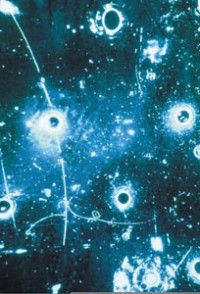
The first observed neutral current event by André Lagarrigue and collaborators in the Gargamelle bubble chamber at CERN
Michel Davier has made many seminal contributions to particle physics. I first knew him as a young rising star at SLAC, where he worked with David Leith and was soon promoted onto the SLAC faculty. However, when given the opportunity, he decided to return to France. He has had a brilliant career in France, where he was the French-Italian Virgo project director at LAL from 1985 to 1994, during the period when LAL built the LEP Injector Linac for CERN and the linear accelerator for the CLIO free-electron laser facility in Orsay. He has made an incredibly broad impact on physics, from his work on electron-positron collider physics, tau physics, B physics, g-2, to teaching and other areas of physics like gravitational waves.
Interestingly, I also knew and very much respected André Lagarrigue, who was instrumental in the discovery of the weak neutral current at CERN, a discovery crucial to establishing the Standard Model of particle physics and where my work at Fermilab provided complementary evidence. Although neutral currents were a prediction of electroweak symmetry breaking, stringent limits on strangeness changing neutral currents already existed from K decay experiments. The search for non-strangeness changing neutral currents required searching with much more difficult neutrino reactions. Using the large Gargamelle heavy liquid bubble chamber, Lagarrigue and colleagues observed several events of the rare leptonic processes νμ + e– → νμ + e– where the single electron emerges from the collision in the far forward direction relative to the beam.
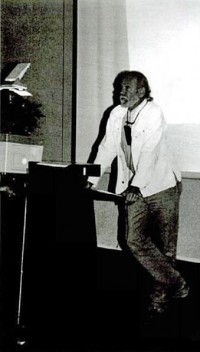
Photo from the first International Workshop on Tau Physics held in Paris in 1990 and organised by Michel Davier
My first strong overlap with Michel Davier was in tau physics. Marty Perl of SLAC had discovered the tau lepton in 1975. Once the tau was established as a heavy lepton, it became clear that the physics of the tau lepton could provide a rich laboratory to study the weak decays, because the tau is so heavy it had many hadronic decay modes. Following this motivation, my colleagues and I from Caltech developed a very productive programme to study tau physics using the CLEO detector at Cornell. Michel also became interested in tau physics. For him, it was a chance to take advantage of the opportunities that would be possible with the Aleph detector on LEP at CERN. In anticipation of that programme, Michel organised the first international workshop on tau physics in Paris and invited me to give the summary talk (a daunting task).
Although I moved on to work in other areas of particle physics following our CLEO tau efforts, I closely followed Michel’s huge impact on the field over the next decade. I think it is fair to say that much of what we have learned about tau leptons has come through the work of Michel and his collaborators. They truly turned this field into a precision science and subsequently were able to make an enormous impact on our knowledge of the physics of tau leptons.
The other area of overlap between Michel’s career and my own is in gravitational waves, where I have a long-term commitment to LIGO, the US long baseline interferometric detectors, and where Michel became involved in the French-Italian project, VIRGO. Michel became interested in burst sources, like the collapse of stars or supernovae, and more recently in gamma ray bursts. He has made significant contributions to understanding detectability, including simultaneous use of several interferometers spaced around the world. As usual, Michel has picked a subject of fundamental interest, as in this case: the collapse of a star first emits gravitational waves during the actual gravitational collapse and later there are signals from neutrinos and then hours later, light signals. So, we expect detection of gravitational wave signals will provide information on the fundamental processes involved.
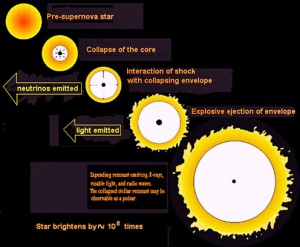
The sequence of stages for the gravitational collapse of stars (e.g. supernovae). Note that gravitational waves are emitted before neutrinos and light.
Finally, we have been very fortunate to have Michel Davier leading the special committee formed by Sakue Yamada called the International Detector Advisory Group (IDAG) to advise him on the development of the detector programme for the ILC. The IDAG reviewed the Letters of Intent that were submitted by detector design groups during 2009, and recommended groups for validation. This process has been very useful in guiding the work of the detector as they evolved the detector concepts towards designs that are realistically buildable and have performance capabilities to address the physics agenda of the ILC. Since validating two ILC detectors, IDAG now monitors the progress of the validated groups under Michel Davier’s leadership of a group of experienced experimentalists, phenomenologists and theorists.
Michel Davier is a superb scientist, who is very deserving of being selected for the Lagarrigue Prize. I am very happy I was able to participate in the celebration of his award, and I congratulate him one more time.

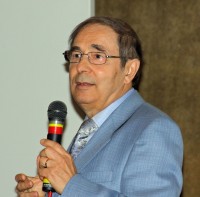

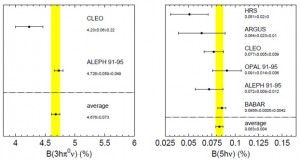

Dear Prof. Davier,
Heartiest Congratulations!
With warm regards + best wishes
Sameen Ahmed KHAN
Engineering Department
Salalah College of Technology,
Salalah, Sultanate of OMAN.
http://SameenAhmedKhan.webs.com/